How AI & outsourcing help Canadian businesses stay competitive amid U.S. tariffs
Canadian businesses are facing growing challenges due to increasing U.S. tariffs on steel, aluminum, and technology imports. These trade policies are driving companies to rethink their supply chain strategies and explore innovative solutions such as Artificial Intelligence (AI) and outsourcing.
This article explores the impact of tariffs on Canadian businesses, how AI is transforming operations, and why outsourcing can help companies cut costs and remain competitive.
Understanding Canada’s Tariff Policies
The Canada Border Services Agency (CBSA) regulates import duties and tariff classifications in Canada. Businesses can access the official tariff schedule to understand how import costs are determined.
However, the recent surge in tariffs imposed by the U.S. has prompted retaliatory tariffs from Canada, affecting billions in trade. With such uncertainties, businesses must adapt quickly to remain competitive.
How AI helps Canadian businesses mitigate tariff costs
AI automation for cost efficiency
Companies are integrating AI-powered chatbots, robotic process automation (RPA), and machine learning to reduce dependency on expensive human labor. AI is also helping to streamline compliance with new tariff regulations, reducing administrative costs.
AI in supply chain optimization
Canadian firms are adopting AI-driven analytics to:
- Navigate disrupted trade routes
- Forecast tariff impact
- Identify cost-saving alternatives
AI is particularly effective in predicting price fluctuations and helping companies find domestic suppliers or alternative trade partners. This allows companies to be more resilient and flexible in their supply chains.
These innovations are not only transforming the labor force but also impacting total sourcing costs. Key implications include:
- Evolving supplier networks – Companies that integrate cutting-edge automation and AI-driven processes will gain a competitive edge, while others risk falling behind.
- Shifting labor dynamics – Traditional workforce challenges in supply chains, such as labor shortages and compliance issues, may change as automation reduces reliance on manual processes.
- Real-time supply chain intelligence – Digital transformation enables procurement teams to access and validate vast amounts of real-time data from multiple supply chain stakeholders, improving decision-making and risk management.
To stay competitive, businesses must rethink sourcing strategies, and leverage technology to drive efficiency and resilience in supply chain operations.
Outsourcing: a key strategy for cost savings
Relocating production to avoid tariffs
Many companies are shifting production to tariff-free regions to minimize costs. Lululemon, for example, manufactures nearly 90% of its products in Asia, avoiding direct U.S. tariff impacts. Meanwhile, Canada Goose, which manufactures domestically, faces higher costs due to tariffs.
Outsourcing IT & customer support
Companies are increasingly outsourcing IT, software development, and customer service to lower-cost markets, improving efficiency while keeping expenses under control. This helps businesses remain competitive without cutting core operations.
Financial strategies to offset tariff impact
According to a Gartner report, CFOs are implementing the following financial strategies in response to U.S. tariffs:
- Updating financial risk assessments and forecasting models to anticipate tariff fluctuations
- Adjusting pricing strategies: 73% of companies are passing some portion of tariff costs to consumers
- Exploring transfer pricing adjustments to optimize tax burdens
- Enhancing cost reduction initiatives within operational workflows
Supply chain adjustments in response to tariffs
CFOs are also taking proactive measures to reduce the impact of tariffs on supply chains (Gartner):
- 48% of CFOs are sourcing alternative materials and components
- 41% are reevaluating their supply chain network design to minimize tariff exposure
- Many businesses are leveraging trade exemptions and free trade agreements to minimize costs
Adapting to future tariff adjustments
The White House recently announced new tariff adjustments that will impact Canadian exports. To stay ahead, businesses must:
- Monitor tariff updates regularly
- Leverage AI for cost forecasting
- Diversify supply chains & outsourcing locations
- Invest in automation to reduce operational expenses
With increasing trade tensions between Canada and the U.S., businesses must adopt AI-driven efficiency improvements and strategic outsourcing to remain profitable despite tariffs. By implementing these approaches, Canadian companies can reduce costs, optimize supply chains, and enhance global competitiveness in an evolving trade environment.
How Meta IT can help businesses navigate trade tariffs
At Meta IT, we empower businesses with cutting-edge AI-driven insights and digital solutions to navigate the challenges posed by trade tariffs. As global trade policies evolve, companies must adapt their supply chains, automation strategies, and market positioning to stay competitive.
How Meta IT supports businesses facing tariff challenges
- AI-powered market insights: leverage Meta IT’s advanced data analytics to predict tariff-related cost increases and optimize trade strategies, with little manual and human analysis.
- Global business networking: connect with international partners and explore outsourcing opportunities to mitigate supply chain disruptions.
- Automation and digital transformation: implement AI-driven automation tools to enhance efficiency and reduce dependency on high-cost labor.
Meta IT is more than a technology company. We are a strategic partner for businesses adapting to global economic shifts. Explore how our AI, automation, and digital infrastructure can help you optimize operations and stay ahead in a changing trade landscape.


